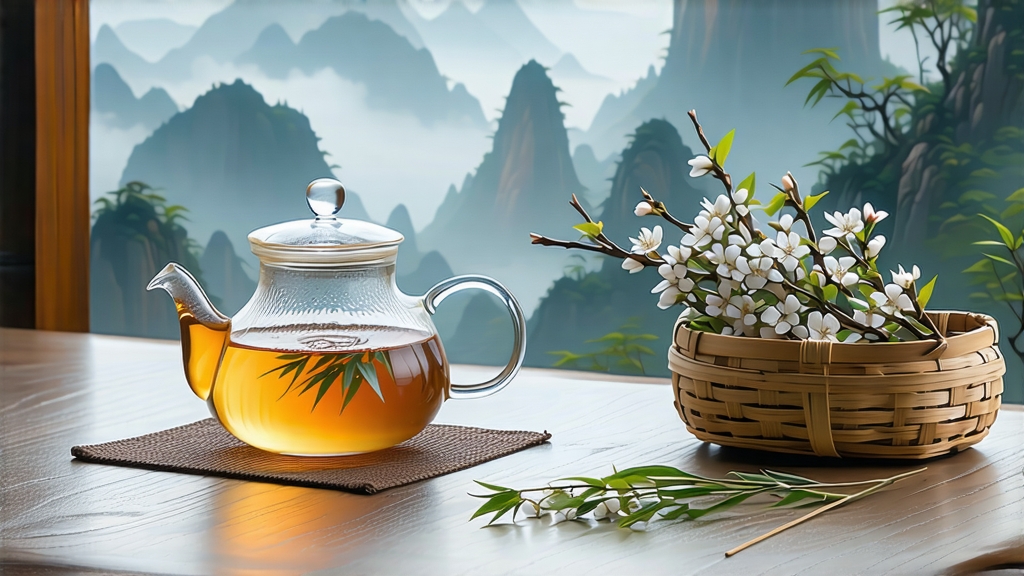
Bai Hao Yin Zhen, literally “White Hair Silver Needle,” is the most aristocratic expression of China’s white-tea family. To international drinkers who equate “white” with colorless or bland, the name may sound timid; yet one sip of a properly brewed Yin Zhen reveals a luminous liquor, a silky texture, and a bouquet that oscillates between fresh lychee, mountain fern, and warm hay kissed by sun. This essay invites you to travel from the myth-veiled past of the Song court to the dew-laden mornings of modern Fujian, to understand why a tea made almost entirely of unopened buds commands such reverence—and how to coax its quiet symphony into your own cup.
Historical whispers
The first documented praise of “white tea” appears in Song-dynasty treatises (960-1279 CE), where imperial tribute lists mention “white down tea” from the north of Fujian. Yet those cakes were green-tea bricks coated with a silvery fuzz; they are ancestors only in name. The bud-only Yin Zhen we recognize today took shape during the late Qing, when export houses in Fuzhou catered to European apothecaries who believed that the pale, down-covered tips possessed medicinal “coolness.” By 1891 Silver Needle was freighted down the Min River to the treaty port of Fuzhou, steamed across the South China Sea, and served in London salons as “Pekoe Tips,” a luxury that cost more than first-flush Darjeeling. The 1915 Panama-Pacific International Exhibition awarded a Gold Medal to a Fuding Yin Zhen, sealing its global fame just as China’s own century of upheaval began. After 1949 the tea gardens were collectivized; buds once destined for Harrods were diverted to Soviet bloc pharmacies. Only in the 1990s, when private enterprise returned to the Wuyi foothills, did Silver Needle re-emerge as the calling card of Chinese white tea.
Terroir and taxonomy
Chinese regulations confine authentic Bai Hao Yin Zhen to two counties: Fuding and Zhenghe, both within Ningde prefecture, Fujian. The defining cultivar is Fuding Da Bai Hao—“Big White Down”—a tea plant selected during the Daoguang reign (1821-1850) for its corpulent buds that can reach 3 cm and bristle with 1,000 trichomes per square millimeter. A secondary cultivar, Zhenghe Da Bai, yields slightly slimmer buds and a gentler, more floral cup; purists debate the two styles with the fervor of Burgundy’s Côte de Nuits versus Côte de Beaune. Within each county micro-elevations matter: buds plucked from the granite soils of Taimu Mountain (600-800 m) carry a flinty note, while those from the red-clay hills around Guantou village taste of ripe melon. Because Yin Zhen is harvested only during a narrow window from mid-March to early April, the entire annual yield of both counties equals roughly one week’s output of West Lake Dragon Well, explaining its rarity and price.
Pluck before dawn
The rule is immutable: one tender bud, no leaf, no stem, no damage. Experienced pickers break the bud with a sideways snap that leaves the tiny “fish-tail” base intact; this prevents oxidation from ruptured cells. Baskets are woven from thin bamboo strips so that condensation cannot bruise the tips. By 9 a.m. the mountain mists lift and the buds begin to stiffen; anything harvested later is diverted to lower-grade White Peony. A top picker gathers barely 500 g of fresh buds in a day, which will shrink to 100 g after drying—enough for only twenty cups of tea.
Withering: the art of doing nothing
Unlike green tea, Silver Needle is never pan-fired. Instead the buds undergo successive stages of “withering,” a passive dehydration that coaxes enzymatic change while preserving the silvery down. Traditionally the buds are laid on bamboo trays stacked like sliding drawers in a sun-lit corridor; every forty minutes a master gently lifts and rotates the trays so that each bud receives an even draft. At night the trays are moved indoors where charcoal embers, buried in ash, provide a residual warmth of 28 °C. The process lasts